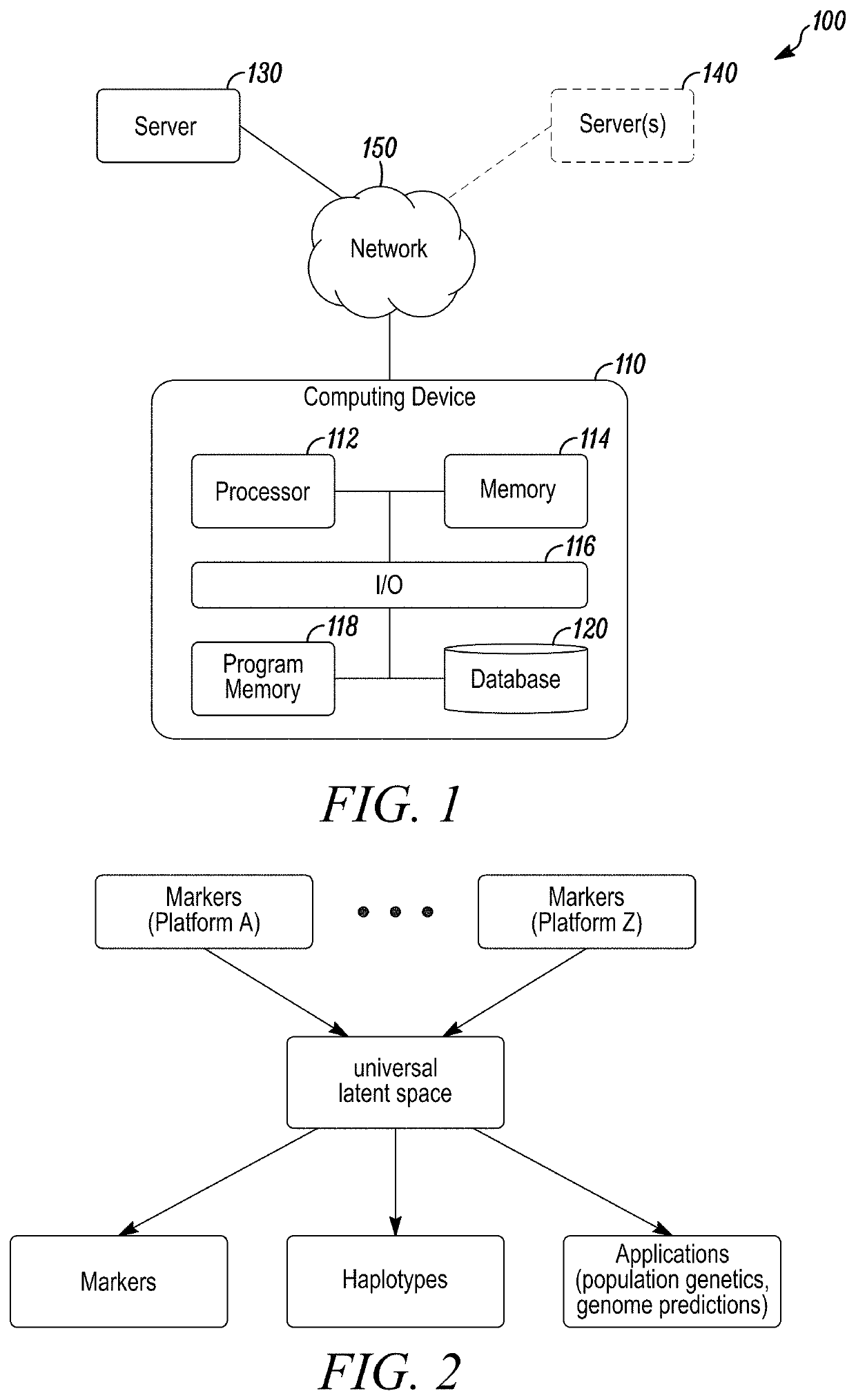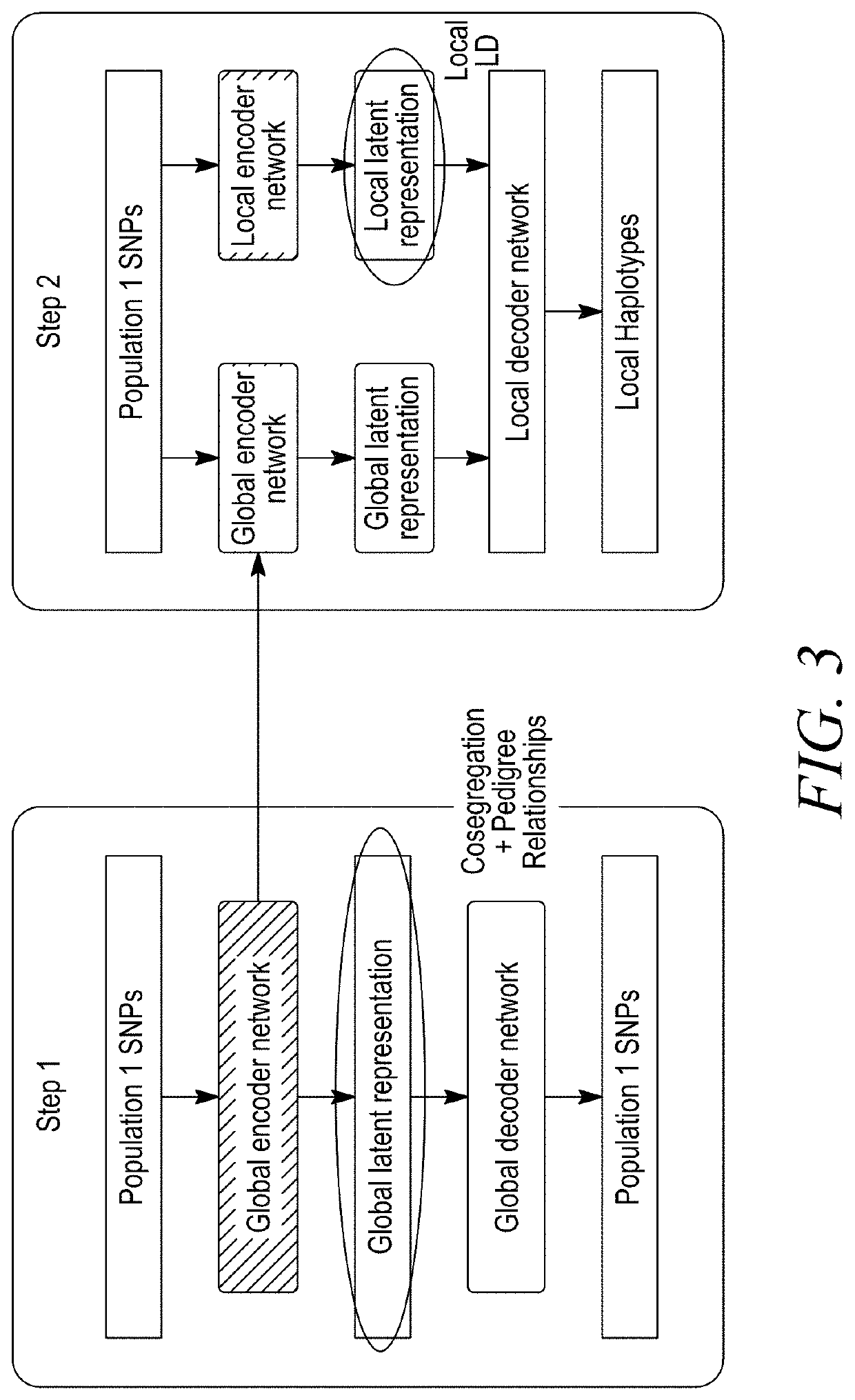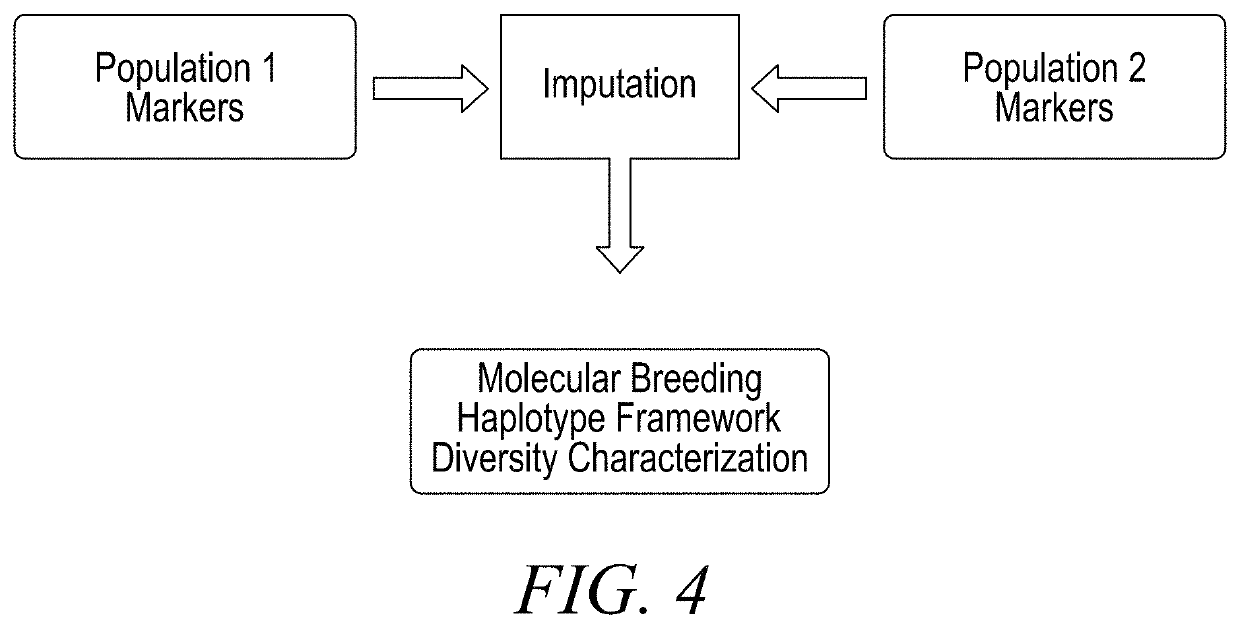Methods and compositions for imputing or predicting genotype or phenotype
a technology of genotype or phenotype, applied in the field of imputation and prediction, can solve the problem that the cost of conducting such breeding programs is high, and achieve the effect of reducing the cost of conducting such breeding programs and reducing the cost of conducting research
- Summary
- Abstract
- Description
- Claims
- Application Information
AI Technical Summary
Benefits of technology
Problems solved by technology
Method used
Image
Examples
example 1
Marker Imputation Across Disparate Germplasm and Marker Platforms
[0133]The maize germplasm collections that originated from distinct closed breeding programs were used for this analysis. These distinct germplasm populations were originally genotyped on disparate marker platforms with a small minority (about 2%) of markers in common between them. Whole genome sequencing and exome capture sequencing efforts provided high density single nucleotide polymorphism (SNP) markers for a smaller subset (1200 breeding program A, ˜2500 breeding program B) of the available inbred lines, and these were mapped to a maize reference genome. A subset of approximately 350,000 high density markers were identified to be in common between the two high density marker sets, and these were selected to provide a measure of reconstruction error that would span both legacy sets of germplasm. Approximately 7,000 SNPs were also identified in the high density data that were used as production markers in one or the...
example 2
Haplotype Imputation from Latent Space
[0141]Haplotypes—generally referred to herein as linked sets of co-segregating markers in a population—provide a useful means for visualizing genetic variation and imputing functional information to regions of identical sequence across a given population. Using the 350,000 high-density markers in common between breeding program B and breeding program A germplasm—as described in Example 1—a common haplotype framework was established between the breeding program datasets by assigning groups of near identical sequence within each specified region to common haplotypes. Such regions have been defined on both genetic (e.g. 1 cM) and physical (e.g. 1 Mb) maps, including haplotypes at the individual gene level. At the 1 cM genetic scale, regions with high density SNP identity of at least 97% were considered to have common haplotypes. However, generalization of the haplotype framework to inbred lines without high density markers required the use of the g...
example 3
Imputation of Haplotypes in Multiple Crops
[0146]Haplotype frameworks were initiated with breeding program A germplasm for crops outside of corn, including the monocot grass rice and the dicot legume soybean. Haplotype sets were constructed using methods described in Example 2, following whole genome sequencing and characterization of high-density SNP variation within representative lines originating from the breeding programs of each crop. After construction of the haplotype frameworks, imputation of the haplotypes was initiated on non-sequenced members of each species using the inference from global and local latent spaces.
[0147]Approximately 700 production markers within rice and 2000 production markers within soy were collected to serve as inputs for all global and local encoders. Prior to training, test sets were defined such that they would only be used for characterization of imputation accuracy. Sets of plausible crosses between breeding lines were also collected to allow for...
PUM
| Property | Measurement | Unit |
|---|---|---|
| density | aaaaa | aaaaa |
| disease resistance | aaaaa | aaaaa |
| high-density | aaaaa | aaaaa |
Abstract
Description
Claims
Application Information
 Login to View More
Login to View More - R&D
- Intellectual Property
- Life Sciences
- Materials
- Tech Scout
- Unparalleled Data Quality
- Higher Quality Content
- 60% Fewer Hallucinations
Browse by: Latest US Patents, China's latest patents, Technical Efficacy Thesaurus, Application Domain, Technology Topic, Popular Technical Reports.
© 2025 PatSnap. All rights reserved.Legal|Privacy policy|Modern Slavery Act Transparency Statement|Sitemap|About US| Contact US: help@patsnap.com



